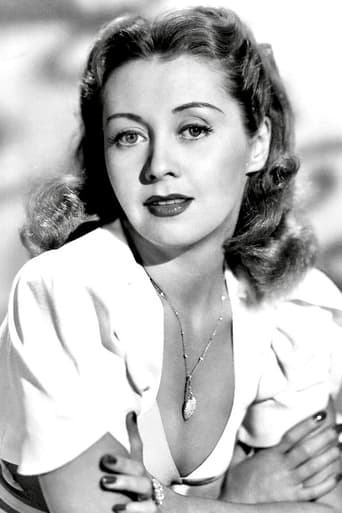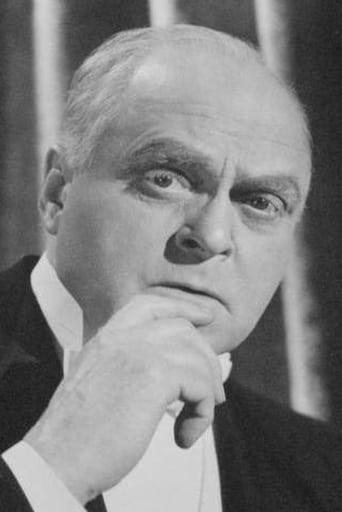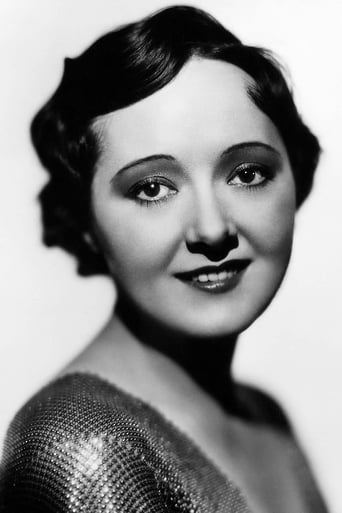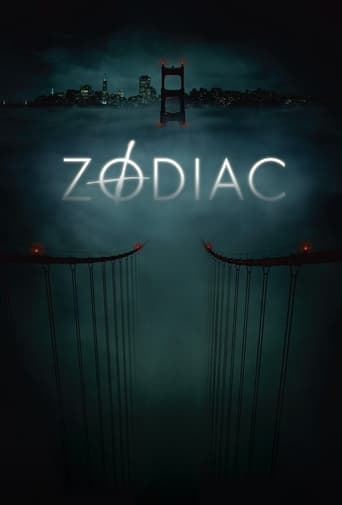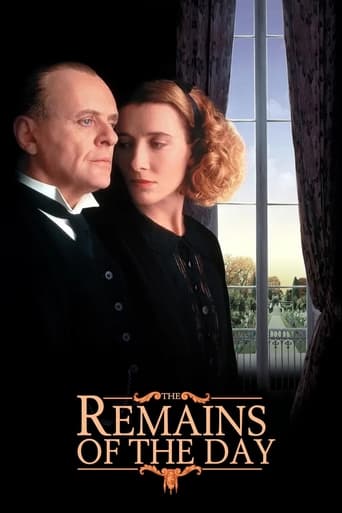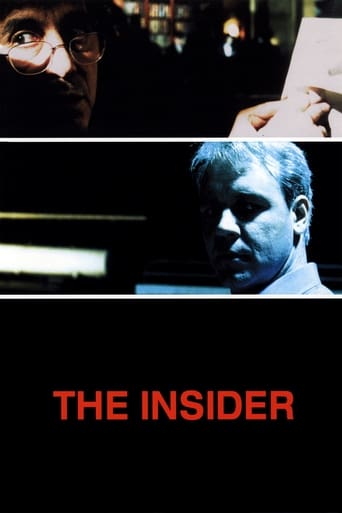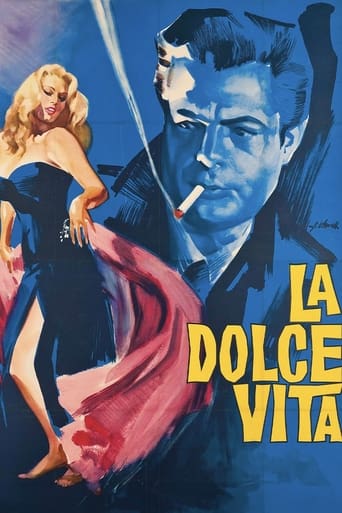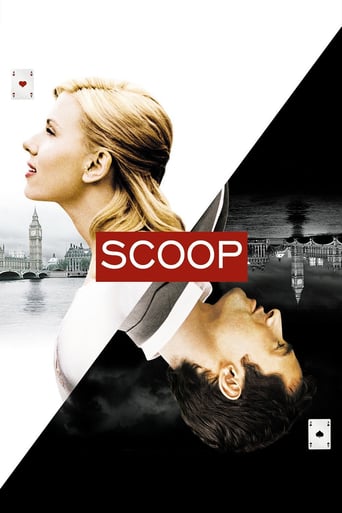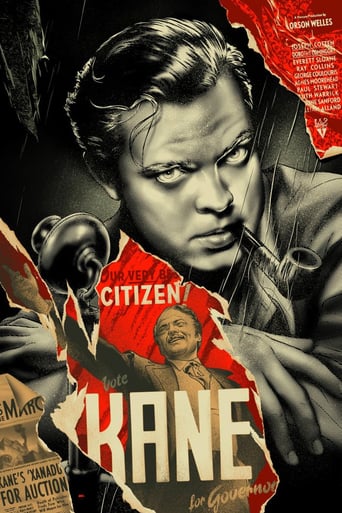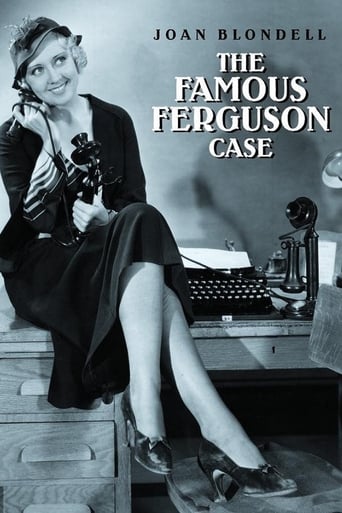

The Famous Ferguson Case (1932)
A foreword warns against the peril of yellow journalism, and the story illustrates it by following events in the upstate New York town of Cornwall after prominant financier George Ferguson is killed. Two types of New York City journalists descend on Cornwall, one interested in facts, the other in getting sensational "news". Mrs. Ferguson is known to have been friendly with a local banker. The Fergusons quarrel the evening he is killed (by "burglars", his wife tells the police later), and she is arrested, spurred on by the "bad" journalists, who also manage to badger the banker's wife into the hospital. Meanwhile, young Bruce Foster runs the Cornwall Courier, and shows the big city reporters how to dig out real news while they attempt to subvert justice for their own ends.
Watch Trailer
Cast


Similar titles
Reviews
Joan Blondell, Grant Mitchell, and the very young Tom Brown star in this early talkie from First National/Warner Brothers. When the bank bigshot is found moidered, the small town newspaper sends the story out on the wires, and all the bigtime reporters converge. Of course, they just want a story, any story, so they have already made up their minds about what happened. We even hear them talking about what might happen if the facts don't match their news stories. The coppers try to race to find out what really did happen, while the newspaper hounds from the big cities try to manipulate the local prosecutor and anyone involved. Will the truth get out before the big trial is over? Pretty fast moving. Good Story, if a bit exaggerated. Didn't win any awards, but those first few years of Oscars were hit or miss anyway. Directed by Lloyd Bacon, who tarted as an actor in the EARLY days of the silent films, and made the switchover to director, and sound. Story by Courtney Terrett. Made me think of Citizen Kane, when the reporters and publishers were not held to such a high standard of fact checking.
This is not "dull, trite and talky" as noted at the time by Variety, but a typically engaging 1932 Warners drama. The murder of a wealthy man in his country home is big news, especially since his wife seems to have quarreled with him that night about her boy friend. Two camps of reporters descend on the small town; the yellow journalists and the more responsible press. Joan Blondell is one of the bad crew, and is Kenneth Thomson's girlfriend, at least until the small town girl takes a shine to him. There are some nicely done scenes, particularly Blondell's cynically telling her rival what to expect from Thomson. She really belts it out in her inimitable style. Nearly as good is where Thomson himself tells the new girl what to expect; that he's an alcoholic and a manic depressive. It's good because he's pretty much telling the truth at the same time he's handing her a line. Tom Brown doesn't leave much of an impression as the local cub reporter, and the story cheats a bit on the solution of the murder. But the reporters' milieu, the good character-player line-up, and the general energy and pace of the production certainly make this worth seeing.
The Famous Ferguson Case (1932)** (out of 4) A great idea is pretty much wasted due to a weak screenplay in this melodrama from Warner. Wall Street big shot Ferguson is shot and murdered inside his summer home and his wife (Vivienne Osborne) tells the police that she was tied up by some robbers. The case gets some of the biggest newspaper reporters in the country and soon they're putting the pieces together without any evidence and they think the better story would be that Mrs. Ferguson's rumored lover (Leon Ames) was behind the killing in an attempt for them two to knock off the husband. THE FAMOUS FERGUSON CASE kicks off with a prologue warning newspapers about not seeking the truth and instead coming up with fake stories to sell papers. It seems this warning would be even more understandable in 2012 but sadly the film takes a rather interesting story and does very little with it. I think the idea of showing how crooked reporters are could have made for a very interesting story but sadly the screenplay here comes off rather lazy at times and by the time the film's over it's just a tad bit too much to believe. The biggest problem is that the prosecutor here is just so downright stupid that he allows the reporters to pretty much tell him who to charge, tell him what happened and he's also dumb enough to have the reporters write his court speeches. This here is just so sloppily written that I didn't believe the situation for a second. Another problem is that the film clearly wants to get its message across and there's just a tad bit too much preaching instead of actually delivering a strong story to get the point across. The entire cast offers up very good performances but I'd say Joan Blondell is pretty much wasted in her role. Tom Brown is very good as the one good reporter trying to learn the truth and Adrienne Dore is good as his partner who starts to get a big head for fame. Ames is extremely good as the man drawn into this mess. The film picks up a little speed towards the end and this includes a terrifically directed sequence where the reporters are confronted by someone they've damaged. I won't spoil what happens but it's quite powerful but it's a shame the rest of the film wasn't this strong.
In November 1931 Libby Holman, a singer with a uniquely husky voice who introduced "Moanin' Low", married a persistent stage door Johnnie - Zachery Smith Reynolds, heir to the Reynolds tobacco fortune. Eight months later he was dead - nobody really knew whether it was suicide or murder. Libby Holman and her lover were charged with his murder but because of the sensation it caused and the terrific influx of journalists allowed to walk around the crime scene, the truth was never really found out. Hollywood wanted to jump on the bandwagon and did the first official version of the story - "Reckless" with Libby Holman's good friend Jean Harlow but neither Holman nor Harlow were pleased with the results. But back in 1932 the real case was making sensational headlines and I think this movie is a thinly disguised attempt to deal with the effects shoddy yellow journalism has on a headline grabbing case.Cornwall County is a sleepy little town where nothing ever happens - or so newspaper reporter Toni (Adrienne Dore) complains. She is using all her powers of persuasion to convince Bruce (Tom Brown) that his future lies in New York city. But like all sleepy little towns (in the movies anyway) this one is a cauldron of bubbling passions and it all comes to a head one night when Mr. Ferguson (Purnell Pratt), the most respected man in town, is shot dead. Mrs. Ferguson (Vivienne Osbourne) is having a not so secret affair with Judd Brooks (Leon Waycoff), a married man and somehow she is not terribly convincing when she is telling of her ordeal to the police.Finally this town is News!!! and reporters descend from all over the country!!! Many of them are muck rakers who will stop at nothing to get a sensational story - even trumping up flimsy evidence against Judd who actually appears quite innocent of any knowledge of the crime. They turn up to interview his wife (Miriam Seegar) who becomes distraught and collapses. Meanwhile, while all the news hounds are hanging around fabricating evidence and trying to intimidate people who may have information, Bruce is doing his own leg work and investigating and manages to scoop them all.While Joan Blondell and Grant Mitchell are the nominal stars, this is one movie that wouldn't get by without the rest of the cast - there are more stars in this than there are in heaven (to borrow MGM's phrase). Just when you start to think, this is a Joan Blondell movie without Joan Blondell, her part becomes more prominent - she plays (what else!!) a jaded reporter who is forever trying to reign in low life reporter Bob Parke's (Kenneth Thompson) roving eye and only by the movie's end gets wise to herself. She does have a great emotional scene towards the end when she gives Toni a few home truths about what her life will be like if she follows Bob's advice and goes to New York with him. A bit of the dialogue - "You're only jealous because I'm young" - "I'm only 20, younger than you, just imagine what you'll look like in a few years time" !!! Three cheers for Joan!!! And who's Grant Mitchell you ask. Well, Grant Mitchell was a terrific character actor from the early thirties. Not for him the forbidding fathers, he was always kind and left his kids wanting to make him proud ("Wild Boys of the Road" etc). In this movie he plays a decent but cynical reporter who as the story progresses is more and more disgusted with his journalistic colleagues. He also has a big moment at the end when he gives his opinion about how low some news hounds will stoop.As to the rest of the cast - it seems that this was the movie to be seen in and anybody who sat in a chair was somebody!!! There was Vivienne Osbourne who gave intensity and drama to every role she played. Adrienne Dore, a cute blonde, who should have made a bigger splash. Tom Brown, a refreshing young juvenile who, like Anne Shirley, received his break in "Anne of Green Gables" (1934). Leslie Fenton always seemed to play dissipated young men - his "Nails" Nathan in "The Public Enemy" was memorable, dependable Walter Miller from the silent serials, Leon Waycoff, who went on to bigger things as Leon Ames, the under-rated Russell Hopton (he is the one sitting on a chair), J. Carroll Naish just starting out and last but not least Miriam Seegar, who passed away this year aged 104.


